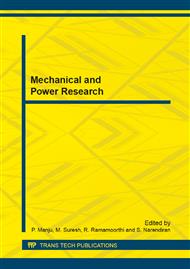p.48
p.53
p.62
p.71
p.83
p.93
p.102
p.110
p.126
Optimal Design and Planning of an Autonomous Hybrid (Wind/Solar-PV/Diesel/Battery) Power System
Abstract:
In most of the developing countries like India and South Africa, there exists still many remote places (isolated from the grid); where the electrification is unavailable due to the financial aspect related to establishing the infrastructure to distribute power over a long distance and consequent high transmission losses. Authors emphasize for an optimal design and planning of an Autonomous Hybrid Power System (AHPS), which will eradicate the problems, faced by the remote places and also reduce per unit cost of electricity. Integration of Wind/Solar-PV/Diesel/Batteries also ensures the prompt availability of power to primary health clinics, high way petrol bunks, schools and the basic communication networks located in remote places. In this scheme, Homer software has been used for analysis the simulation results and compares the generation cost of the proposed Autonomous hybrid power system. DC power is generated by the wind turbine and solar-PV and DC is connected to the load through an inverter. This system has been successfully deployed to meet the small energy requirement of an office room in the educational institution. It also reduces the dependence on one single source of power and has increased the reliability. While doing so, the quality of the power as well as the variations in the environmental conditions does not disturb the loads connected. Therefore the reliability is also ensured in power generated with the AHPS. It is easy to construct the plant with 400W capacity on the roof top of the building; with a meager cost of around $1800.
Info:
Periodical:
Pages:
83-92
Citation:
Online since:
May 2014
Authors:
Keywords:
Price:
Сopyright:
© 2014 Trans Tech Publications Ltd. All Rights Reserved
Share:
Citation:



